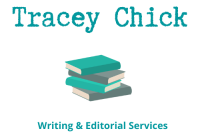Share this post in your favourite places
Finished writing your book? Find out whether the self-publishing route is for you.

Securing a six-figure book deal is the stuff of dreams. A few writers achieve this goal, but often only after years of hard work and multiple rejections. There are others, however, who have looked for another way, either because they have tired of the knockbacks or, because they have sidestepped the traditional route altogether and opted instead for self-publishing.
There has long been the option of self-publishing, (often in the past called vanity publishing) but it has never been easier to go down this route and there are a growing number of authors finding success in this way.
This is the first in a series of posts I will be sharing on the intricacies of self-publishing and it begins by looking at the pros and cons of taking this path to help you work out if it is the right one for you.

Pros of self-publishing
Royalties
Typically, self-publishing authors retain between 50–70 % of their royalties as opposed to 10–15% in a traditional publishing deal. This is of course a large difference and impacts greatly on the ability to earn a living from your writing. The amount you can earn does depend on the number of books you sell but the potential is definitely there.
Many outlets to sell through
Most self-published authors earn the majority of their money through selling ebooks. When people think of these, they automatically think of Kindle. Of course, Kindle Direct Publishing (KDP) has the largest market share. There are other outlets too, such as Kobo, Apple Books and Barnes and Noble (Nook). Print on demand via KDP means people can purchase hard copies of your book without you having to shell out money to have them printed.
Quicker process from writing to publishing
Books that follow a traditional route to publishing can take anything from 6 to 18 months to appear on sale. In theory, a book that is self-published could be finished one day and ready for sale the next. I wouldn’t recommend this as your work should still go through a proper editing and design process to ensure it’s in the best shape it can possibly be. However, a finished book can be uploaded to one or all of the ebook retailers and be on sale within 24 hours or so.
Autonomy
One of the most appealing parts of self-publishing is the ability to decide on all aspects of your book whether it be the cover design, the layout or the title. In the traditional world, commissioning editors make these decisions and authors have little, if any, say in the matter. And this retention of creative control extends to the possibility of creating audiobooks from your work and even TV and film rights.
Publish as many books in a year as you want
Something that follows on from autonomy over your work is the ability to publish as many books as you want. Traditional deals usually specify that an author only has one or two books released per year but there are no limits (other than your ability to write quickly) when it comes to self-publishing.
Longer shelf life
Your self-published book can be around for as long as you are prepared to put in the effort to market and advertise it. The same can’t be said for traditionally published books. These can disappear from shelves a few months after release to make way for newer titles.
Helps you build a following
Genre fiction works particularly well on the self-publishing platform. Some of the most successful self-published books are those that form part of a series such as Rachel McLean’s Zoe Finch series and Will Wight’s Cradle series. Both of these authors have strong fanbases, ensuring they have readers coming back for successive new books.

Cons of self-publishing
Upfront costs to the author
Traditional publishing contracts require no outlay from the author (although I’ve read tales of authors having little advertising or marketing done on their behalf). With self-published books, costs can be incurred from editing, formatting and cover design as well as from marketing and advertising. These have the potential to be significant depending on how much the author chooses to do for themselves. The author needs to weigh these up against the earning potential of their work.
More time consuming
Once the book is ready and uploaded to your sales outlet of choice, there is more hard work to be done. Without the support of an agent and publishing company, it will be down to you to promote your book at every opportunity. You will have to learn new skills unless you are skilled in the worlds of marketing and advertising. All of this takes time and effort on top of writing your next book.
Author perception
We writers are very hard on ourselves and may choose to view the self-publishing route as somehow inferior. There are many self-publishing authors who would argue strongly against this viewpoint. There are many who, following their independent success, have secured a contract with a traditional publishing house. Ultimately, it will be your decision but try not to see the self-publishing route as a lesser option.
If you would like to read about the experiences of other self-published writers, have a read of this. It might just inspire you!
If you would like to dig a bit deeper into the self-publishing route:
More Resources
Mark Dawson The Self Publishing Formula
Rachel McLean 5 Steps to Author Success
Joanna Penn The Creative Penn

Tracey Chick is a line and copyeditor specialising in historical fiction and narrative nonfiction.
She is a member of the Chartered Institute of Editing and Proofreading.
Visit her business website at Tracey Chick , connect on Twitter at @WriterTjc, LinkedIn and Facebook
Share this post in your favourite places!
